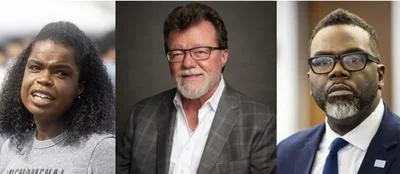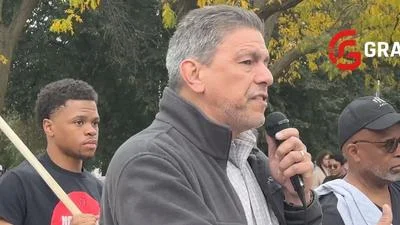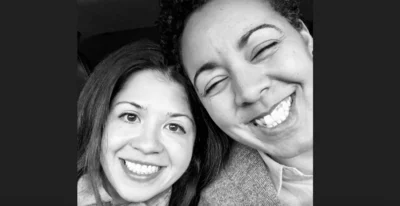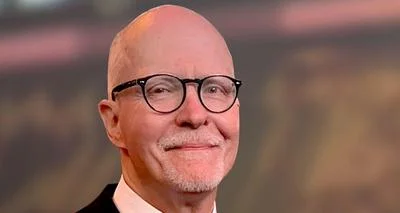AI and health care: DePaul and Rosalind Franklin award interdisciplinary research grants | CC0 DePaul University/Jeff Carrion
AI and health care: DePaul and Rosalind Franklin award interdisciplinary research grants | CC0 DePaul University/Jeff Carrion
DePaul University and Rosalind Franklin University of Science and Medicine are funding three faculty research projects that bring together artificial intelligence, biomedical discovery and health care. The competitive grants kickstart research among interdisciplinary teams, which include biologists, computer scientists, a geographer and a physicist.
The first project will combine wearable, robotic sensors with GPS mapping to predict and prevent falls and injury among patients and members of the military. Another will analyze neurons in the brainstem to discover boundaries that control speech and swallowing. The third project uses machine learning and video tracking to develop early detection for illnesses like Parkinson’s disease.
“We are thrilled with the scope and vision of these collaborative research projects from DePaul and Rosalind Franklin faculty members,” said Salma Ghanem, provost of DePaul University. “Together, we have the potential to see artificial intelligence fuel major advances for human health in our lifetime.”
"This AI initiative and the outstanding funded first-round pilot projects represent the next step in the ongoing research collaboration between our two universities, which to date has yielded substantive outcomes," said Ronald Kaplan, executive vice president for research at Rosalind Franklin University. "We believe this cutting-edge work has significant potential to improve health within our society."
Wearable sensors, GPS combine to prevent injury“We can tell a lot about a person’s health from how they walk,” said Sungsoon (Julie) Hwang, professor of geography at DePaul. She is teaming up with robotics expert Muhammad Umer Huzaifa and data scientist Ilyas Ustun. Their research will combine wearable technology and GPS to track a person’s gait.
In his robotics and AI lab, Huzaifa deploys Inertial Measurement Units (IMU) to track whether a person is walking, sitting or even falling. These sensors, which measure a body’s movement by detecting the direction of gravity and rotational speeds, may be worn as part of an exoskeleton. “Predicting harmful walking patterns and preventing falls has implications for people in a health care setting and members of the military deployed in the field,” Huzaifa explained.
DePaul faculty will work with Chris Connaboy, director of the Center for Lower Extremity Ambulatory Research at Rosalind Franklin, to use data from his lab. Ustun will use machine learning to integrate the GPS and IMU data, potentially predicting where injuries and falls could occur.
“Our movements create patterns, and we want to identify distinct patterns using machine learning to help assess an individual's current health, especially those who are at risk,” Ustun said.
Machine learning discovery in the brainstemThe brainstem is responsible for breathing and swallowing, which can have implications for speech disorders, apnea and Sudden Infant Death Syndrome. “Within the brainstem, neurons are not clearly differentiated,” said Jacob Furst, professor of computing at DePaul. “Our project will look for genetic signatures that may differentiate the cells when there is no obvious physical difference.”
“There is so much data being generated in the life sciences that it can be difficult to look for patterns to discover key biological insights,” said Thiru Ramaraj, an assistant professor of bioinformatics at DePaul. Drawing from an atlas of existing high resolution genome wide expression data from the adult mouse brain, Ramaraj and team will employ advance machine learning to identify clusters and borders within brainstem neurons.
Working with questions that are important to brainstem researcher Kaiwen Kam at Rosalind Franklin, the team hopes to develop a neuroanatomical screening, which may also have applications for other types of tissue.
“It’s both challenging and exciting to apply computational techniques to problems that have a real impact on health,” Ramaraj said.
Diagnosing neurological disorders through AI movement patternsEric Landahl is a DePaul physicist who has spent much of his career making movies of molecules, including work at Argonne National Laboratory. “Hollywood movies are usually filmed at 24 frames a second, but atoms move at a speed closer to a billion frames a second,” Landahl said. His research uses x-rays and lasers and creates massive amounts of data.
He is joining EunJung Hwang at Rosalind Franklin to use a similar approach to tracking the movements of mice with Parkinson’s. Using cloud computing and machine learning, they aim to develop a model that can predict neurological disorders before they’re visible to a trained medical professional.
“This is the chance to be at the forefront of modern approaches to data analysis,” Landahl said. “This research grant gives us the chance to briefly step away from our daily work to work on something exciting that could become something bigger in the future.”
Original source can be found here






 Alerts Sign-up
Alerts Sign-up